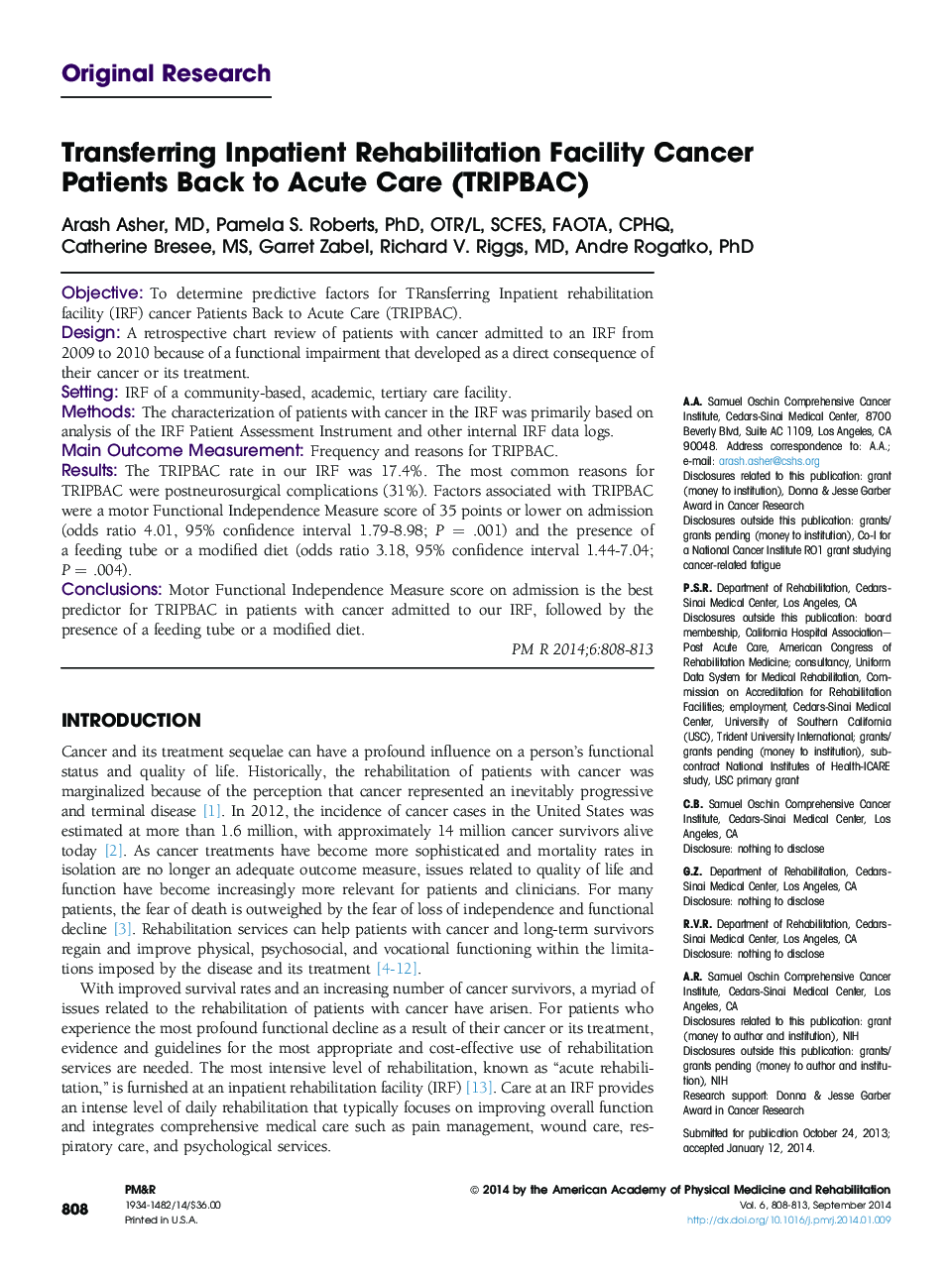| Article ID | Journal | Published Year | Pages | File Type |
|---|---|---|---|---|
| 2715885 | PM&R | 2014 | 6 Pages |
ObjectiveTo determine predictive factors for TRansferring Inpatient rehabilitation facility (IRF) cancer Patients Back to Acute Care (TRIPBAC).DesignA retrospective chart review of patients with cancer admitted to an IRF from 2009 to 2010 because of a functional impairment that developed as a direct consequence of their cancer or its treatment.SettingIRF of a community-based, academic, tertiary care facility.MethodsThe characterization of patients with cancer in the IRF was primarily based on analysis of the IRF Patient Assessment Instrument and other internal IRF data logs.Main Outcome MeasurementFrequency and reasons for TRIPBAC.ResultsThe TRIPBAC rate in our IRF was 17.4%. The most common reasons for TRIPBAC were postneurosurgical complications (31%). Factors associated with TRIPBAC were a motor Functional Independence Measure score of 35 points or lower on admission (odds ratio 4.01, 95% confidence interval 1.79-8.98; P = .001) and the presence of a feeding tube or a modified diet (odds ratio 3.18, 95% confidence interval 1.44-7.04; P = .004).ConclusionsMotor Functional Independence Measure score on admission is the best predictor for TRIPBAC in patients with cancer admitted to our IRF, followed by the presence of a feeding tube or a modified diet.
